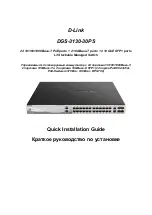
8
{
Scope
—The Scope field contains four bits, which indicate the scope of the IPv6 internetwork for
which the multicast traffic is intended.
Table 5
Values of the Scope field
Value Meaning
0, F
Reserved
1 Interface-local
scope
2 Link-local
scope
3 Subnet-local
scope
4 Admin-local
scope
5
Site-local scope
6, 7, 9 through D
Unassigned
8 Organization-local
scope
E Global
scope
{
Group ID
—The Group ID field contains 112 bits. It uniquely identifies an IPv6 multicast group in
the scope that the Scope field defines.
Ethernet multicast MAC addresses
A multicast MAC address identifies a group of receivers at the data link layer.
•
IPv4 multicast MAC addresses
As defined by IANA, the most significant 24 bits of an IPv4 multicast MAC address are 0x01005E.
Bit 25 is 0, and the other 23 bits are the least significant 23 bits of a multicast IPv4 address.
Figure 6
IPv4-to-MAC address mapping
The most significant four bits of a multicast IPv4 address are 1110, which indicates that this
address is a multicast address. Only 23 bits of the remaining 28 bits are mapped to a MAC
address, so five bits of the multicast IPv4 address are lost. As a result, 32 multicast IPv4 addresses
map to the same IPv4 multicast MAC address. Therefore, in Layer 2 multicast forwarding, a switch
might receive some multicast data destined for other IPv4 multicast groups. The upper layer must
filter such redundant data.
•
IPv6 multicast MAC addresses
The most significant 16 bits of an IPv6 multicast MAC address are 0x3333. The least significant
32 bits are the least significant 32 bits of a multicast IPv6 address.














































